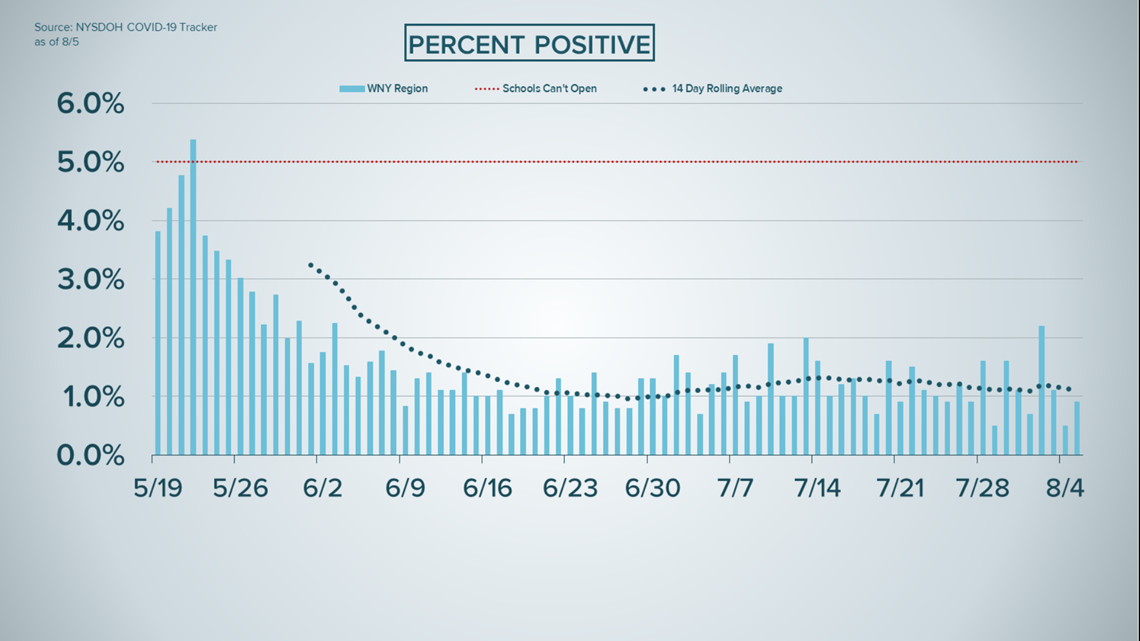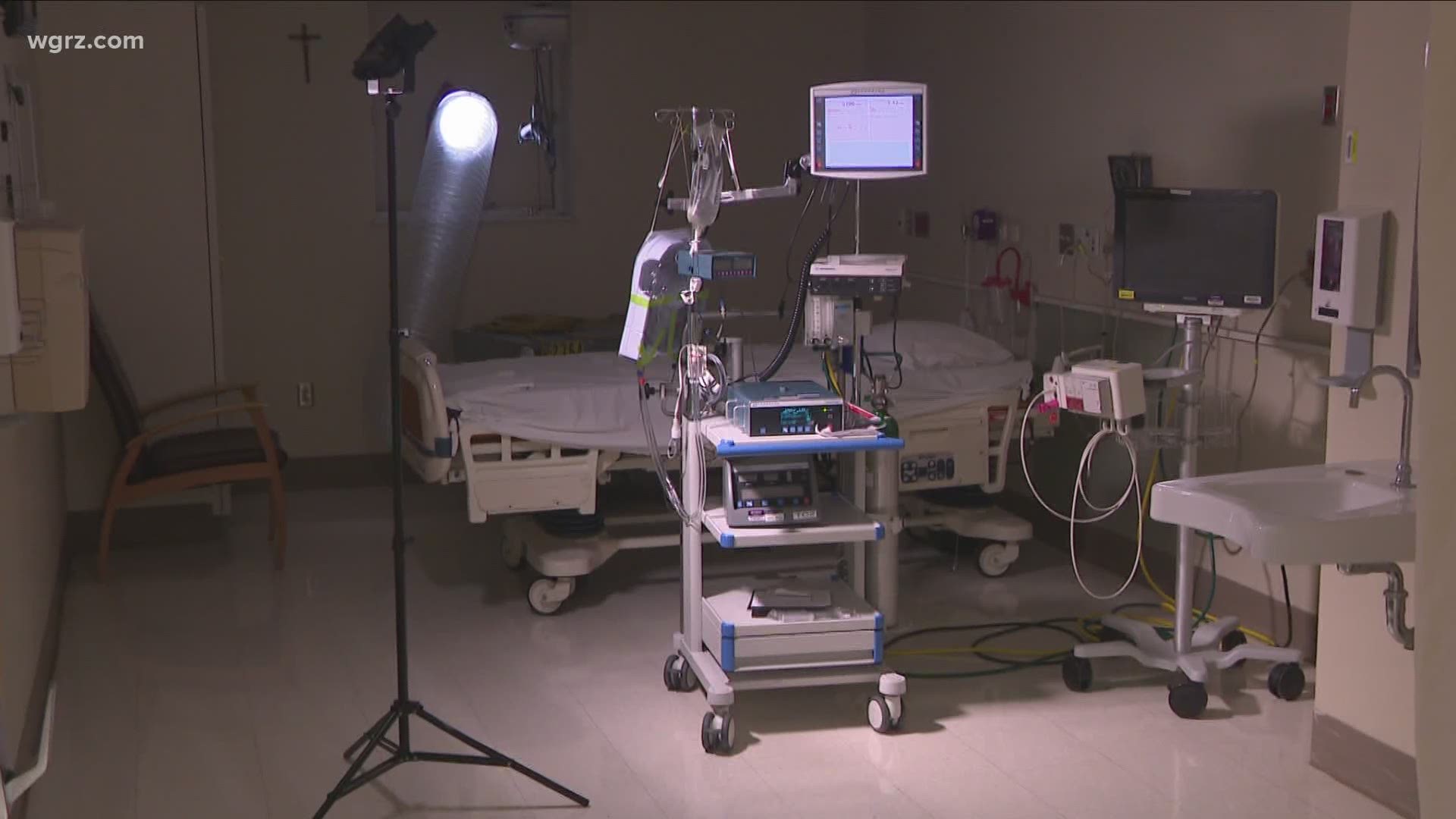BUFFALO, N.Y. — Daily COVID-19 hospitalizations in the WNY Region reached a new low on August 5 dropping to 26. The previous low was 28 on July 28.
The Western New York region consists of Erie, Niagara, Chautauqua, Cattaraugus and Allegany counties.
The percent positive in the five county region on August 5 was 0.9%. Out of 4,734 test results, there were 44 positives. The seven-day rolling average is now 1.1%.
Statewide, the numbers also continue to remain steady. Of the more than 72,000 test results reported to New York State on Wednesday, 703 were positive. That averages to 0.97% . Three people died on Wednesday, bringing the total number of COVID-19 related deaths to 25,185.
"There's no secret to how a virus spreads - this is mathematics, this is science and this is a function of our behavior, which we see reflected in the daily numbers. New Yorkers worked hard to change our behavior and bring the numbers down to the levels we have been holding at through our phased reopening," Governor Cuomo said. "We are now focused on protecting that hard-won progress. We are fighting against the national surge of cases with our quarantine efforts, but we need local governments to be more active in enforcing compliance."


Human coronaviruses are usually spread through...
- The air by coughing or sneezing
- Close personal contact, such as touching or shaking hands
- Touching an object or surface with the virus on it, then touching your mouth, nose or eyes before washing your hands.
Help stop the spread of coronavirus
- Stay home when you are sick.
- Eat and sleep separately from your family members
- Use different utensils and dishes
- Cover your cough or sneeze with your arm, hot your hand.
- If you use a tissue, throw it in the trash.
Lower your risk
- Wash your hands often with soap and water for at least 20 seconds. If soap and water are not available, use an alcohol-based hand sanitizer.
- Avoid touching your eyes, nose, and mouth with unwashed hands.
- Avoid close contact with people who are sick.
- Clean and disinfect frequently touched objects and surfaces.
- If you are 60 or over and have an underlying health condition such as cardiovascular disease, diabetes or respiratory illnesses like asthma or COPD, the World Health Organization advises you to try to avoid crowds or places where you might interact with people who are sick.

